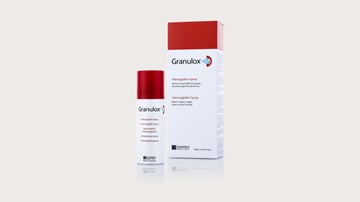All-in-one foam dressing
Mepilex Border
Five-layer self-adherent dressing for chronic and acute wounds
Mepilex® Border is a versatile all-in-one bordered foam dressing available in a large range of shapes and sizes. You can use it for treating chronic and acute wounds. Plus it’s clinically proven to help prevent pressure ulcers
The proven five-layer construction includes Safetac® – the original less-pain contact layer with silicone adhesion. Safetac is designed to mould softly to skin without sticking to the moist wound
The absorption layer instantly draws in moisture and exudate, protecting the periwound skin from maceration
- Dressings with Safetac minimise pain and trauma at dressing changes
- Versatile all-in-one dressing for a wide range of chronic and acute wounds
- Proven to help prevent pressure ulcers
- Has good fluid-handling capacity
, for effective exudate management with less risk of maceration - Minimises skin stripping
Further product information
When to use Mepilex Border
You can use Mepilex Border in the treatment of a wide range of exuding chronic and acute wounds; and secondary healing wounds. Our soft, conformable dressing maintains a moist wound environment – so you can trust it to effectively absorb and retain exudate.
You can choose from a large selection of wound dressing sizes – to suit from small to large wounds. We also have shaped dressings for wounds located on challenging areas of the body.
Mepilex Border can also be used as part of a prophylactic regimen to help prevent pressure ulcers
You can reposition Mepilex Border after a skin assessment.
How to use Mepilex Border
Watch how to apply a Mepilex Border all-in-one foam dressing.
How Mepilex Border works
Watch how Mepilex Border works.
Product details
| Ref. No | Description | RET (Pcs) | TRP (Pcs) |
| 295200 | Mepilex Border 7,5x7,5 cm | 5 | 70 |
| 295300 | Mepilex Border 10x10 cm | 5 | 50 |
| 295400 | Mepilex Border 15x15 cm | 5 | 50 |
| 295600 | Mepilex Border 15x20 cm | 5 | 50 |
| 295800 | Mepilex Border 10x20 cm | 5 | 25 |
| 295850 | Mepilex Border 10x25 cm | 5 | 35 |
| 295900 | Mepilex Border 10x30 cm | 5 | 25 |
Related products
'References'

 Mepilex Border
Mepilex Border














